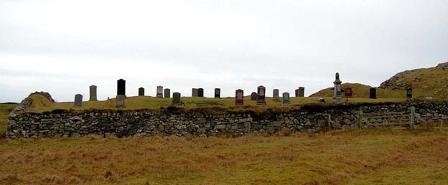
Today I started the day by doing some weaving, prior to my "weaving lesson" in which we'd planned for me to have a short check-in with Norma before she leaves for a week. After reaching the point where I needed more wool, I decided it was time for a walk, and headed out to find the village cemetery. Several folks had mentioned to me that it was a nice walk to the cemetery, but I hadn't gotten a clear indication of where the walk started. When Andrea was here, she pointed out the road to start on, so I headed to this point (almost directly across from Norma and Ian's place) and headed back into the hills toward the coast.

The road was paved most of the way to the cemetery, although there were no houses after only a short while. I had always assumed this road was just a driveway to those couple of houses at the front. The road winded up the hills, coming to a higher part of the town. The cemetery lay on the moor not far from the coast. It was a small cemetery, showing how small the town is. The dates I read ranged just over 100 years.
I found three Morrisons buried in the cemetery, as well as many MacDonalds, MacAulays, and MacLeods. There was a view of the water from the cemetery.
From here I climbed a fence and walked down to the coast. The water was very calm, as was the wind, and it was quite peaceful listening to the gentle lapping of the water against the rocks of the shoreline. As with all the coastal areas here, the land was full of juts of rock sticking out into the water, and softer points where things had been eroded away, making fingers of land reaching out into the water. It was beautiful.
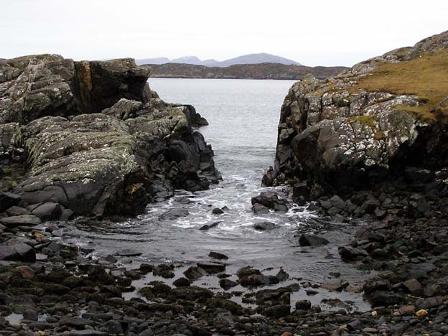
|
|
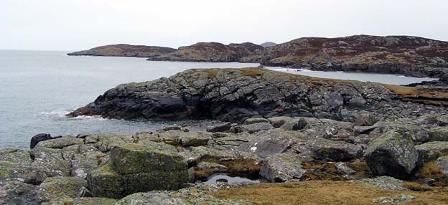
| |
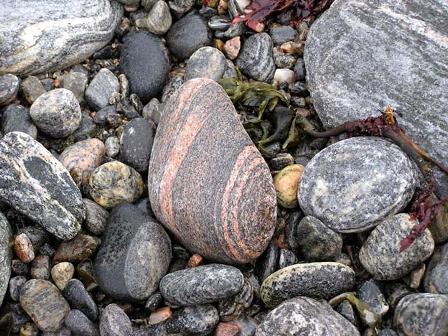
| |
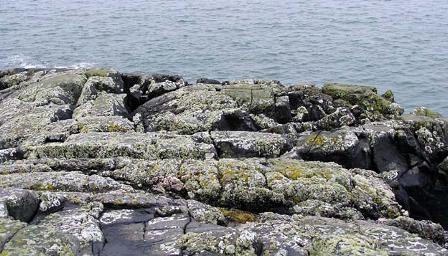
|
There was a buzzard (hawk) perched near the cemetery, who would fly away each time I tried to take his photo. There were various gulls (including a black-backed gull), a shag, and some oystercatchers out on the rocks offshore. You could hear them calling to one another on occasion, the only sound besides the surf and the occasional boat noise in the far distance.
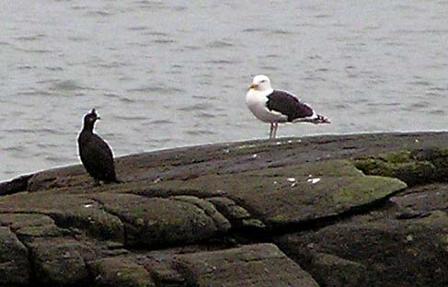
From this rocky shoreline I headed inland toward the town, arriving at the point where Loch Roag, a sea loch, juts into the land sharply, creating a deep inlet into the town. I walked around this, watching and listening to some red-breasted mergansers carrying on with great furor. This was the first time I had ever seen these birds in the wild, and I'm quite excited to have spotted them. From here I climbed over a hill to another part of this inlet, and crossed through a gate over a causeway to the main part of the village on the higher back road. Walking through this area, I flushed a snipe, but didn't get to see him well. (Yet again -- this is the third I've seen, but only as they were disappearing. I wouldn't know what I was seeing if a local hadn't told me the first time.) I also passed a dead sheep, sadly. This was the first I'd seen my entire time here so far.
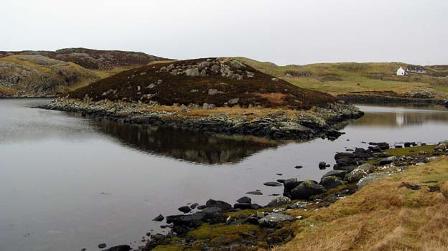
Walking through a muddy field brought me up to the main road, passing many stone ruins along the way. I walked the road, being greeted by several border collies, and headed into the main village. Here I passed the main inland loch of the village, which my map says is called Loch a Bhaile. This loch had tufted ducks on it, which I have seen regularly while here. There were also many grey lag geese, blackbirds, starlings, and redwings flitting about, and a few stock doves. It was quite an excellent day for birding.
As I entered the main part of the village, I passed Norma and Ian's house and found Ian out talking to another villager. He invited me in for a cuppa, and I ended up staying for lunch. After lunch, Norma and I talked weaving, I got more wool, looked at some fascinating blankets she's planning to weave, and then headed back home to continue my weaving project.
Return to
Or read the description of the